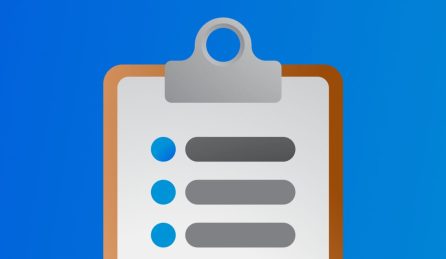How do you feel when you click on a link and end up on a page like this?

It’s frustrating, isn’t it? You click on one of the results expecting to see a web page with the courses you were promised in the search results. When the link is broken, what you see instead is a 404 not found error page that tells you that the page you’re looking for is not available.
Now imagine this is happening to people who visit your site. What do you think they’ll do next? Well, they’ll most likely hit the back button, which means you’ve just lost a potential customer. And who knows how many more before that?
Fortunately, you can fix them and in this article we’ll show you how. We’ll start by explaining what broken links are and what causes them, then move on to how to find and fix them so your visitors never hit that back button again (at least not because of a broken link).
What is a broken link?
A broken or dead link is a link that you click but doesn’t work or doesn’t take you to the page you were meant to see.
You can try to convince yourself that they’ll come back but, unfortunately, the stats are against you. In fact, 88% of online consumers are less likely to return to a site after a bad experience. So, that broken link not only drove prospects away, but it also damaged your reputation in the process.
The phenomenon is sometimes described as ‘Link rot’. Research suggests that 8% of external links (those to other websites) may be broken after just the first three months. After seven years, nearly 44% of those links would likely be gone. This shows how quickly online information can get lost, making it especially hard to find older content.
When was the last time you checked all your links to ensure they work properly and aren’t broken? If you’ve ever redesigned your site, deleted images and videos or changed the URL of a product page, then you may have broken links you’re not aware of.
What causes broken links?
So, what causes broken links? The most common causes are:
➤ Incorrect hyperlinks
➤ Deletion of web pages or individual images, videos, files
➤ Renaming or moving a page and forgetting to update your internal links
➤ Linking to content like images, videos, PDFs, that has been deleted or moved
➤ Changing domain names and moving the site to a new URL
➤ Whatever the cause, broken links are frustrating errors that need to be fixed immediately.
Let’s look at some of the ways in which a dead link can hurt your website.
Why and how do broken links harm your website?
A broken link may not seem so bad on the surface. But the truth is it can do some serious damage to your website, your reputation and your business. It can hurt your search engine rankings and your site’s user experience, and it can also result in lost customers and revenue.
Here’s how:
User’s experience on your site. If your site is a chaotic mess of broken links that prevents users from accessing the information they need or from completing a task, don’t be surprised if they move on to the next site that actually works. And it’s probably going to be one of your competitors.
Your reputation and revenue. No matter how much time and resources you’ve invested into getting potential customers to your site, if what they find is a broken site, all of your efforts will have been wasted. How can they trust to hand over their information or credit card details to an unreliable site that doesn’t even work? Trust takes time to build, but only a moment to lose.
Your SEO efforts. While Google has stated that simply having a broken link or two on your site won’t affect your rankings in the search engine results pages (SERPs), the impact shows in other ways.
When crawlers run into a broken link, they will waste time crawling the link to verify it is broken so it can be categorised as such.
This wastes crawl budget which could have been used on pages that are ok, harming the chances of those pages ranking well on in search results. (And of course a broken link won’t pass on the SEO value that a normal link passes.)
But that’s not all. Usually, when visitors land on a broken page, they leave within seconds. By spending less time on your site, search engine algorithms will assume it’s because you aren’t providing visitors with high-quality content or information that’s relevant to their search. This, of course, results in lower rankings.
Now that you know how much damage broken links can do to your online business, let’s look at how you can find them.
How to find broken links on your website
There are lots of tools you can use to find broken links, many of them free.
Google Search Console (GSC) is great at detecting pages on your site that return errors. You can find a list with 404 pages on your site in Crawl-> Crawl Errors -> Not Found.

If you’re not familiar with GSC, you can learn how to set it up and use it to find broken links on your site (and more) from our beginner’s guide to Google Search Console.
Make sure you check GSC regularly for these errors and, if you find any, try to fix them as soon as possible.
Xenu Link Sleuth is another free tool we’d recommend to help you check your entire site for broken links. The way it works is by analysing every link on your site, on images, frames, and scripts.
Open Xenu and click File-> Check URL. Next you’ll need to enter the URL you want to check for broken links. If you’d like to check for broken links on your site alone, simply uncheck the Check external links box.

Also, don’t forget that if you’re using the 123 Reg Search Engine Optimiser, you can go to the “Review your site” tab to find out if you have any broken links that interrupt the user journey and create a bad overall experience on your website.
How to fix your website’s broken links
Once you’ve identified your broken links, it’s time to fix them. Start by examining each link and page, and see why it’s broken.
For example, if you’ve updated your URL structure or if you’ve deleted an old page and created a new one to take its place, then that old page will turn into a 404 not found error when people try to access it.
To fix it, make sure that whenever you move a page you do a 301 redirect. This will send visitors to the new location and will also tell search engines that the page has permanently moved.
You can find out more about 301 redirects in point four of this article while this guide will explain how to do a redirect on any platform.
Remember: It’s also possible to have broken links pointing to your site from websites you have no control over. If this happens, you should attempt to contact the owner of the website, let them know what the problem is and where the incorrect link can be found, and then ask them to update their site with the correct link.
Wrapping up
It’s really important not to ignore broken links on your website. They can cause problems for your site, hurt your image online, and even make you lose money. Now that you know how to find and fix these broken links, you should start fixing them right away. Don’t put it off. The longer you wait to fix broken links, the more you risk losing. It’s a good idea to regularly check and fix these links to keep your website running well and to keep your visitors happy. Acting fast and keeping up with this regularly can make a big difference.




